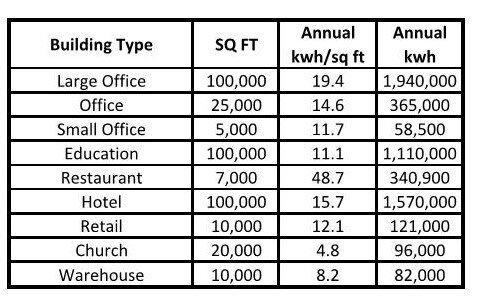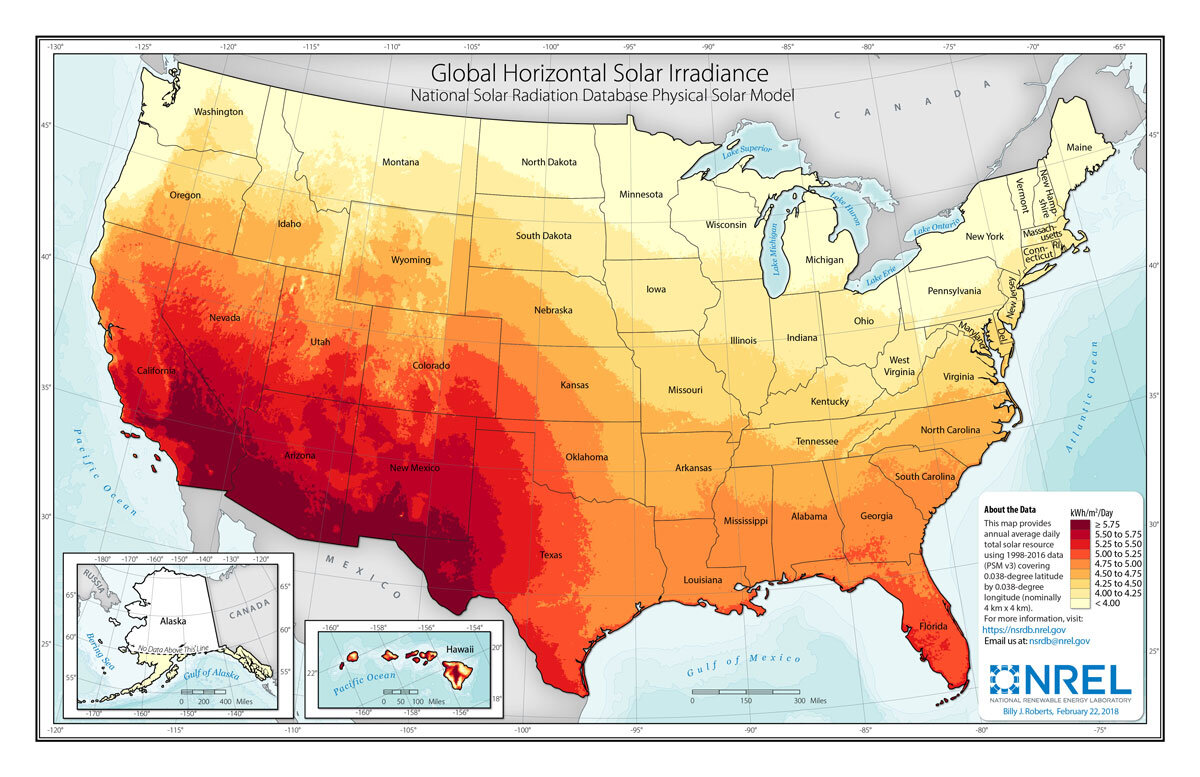Basics of Solar PV Systems
Are you interested in adding a solar photovoltaic (PV) system to your building? 2020 may be the best time to take advantage of the federal tax rebates before they are reduced in 2021 and 2022. Read below to learn about operation, sizing, and payback for solar PV systems.
How Does Solar PV Work?
A solar photovoltaic (PV) system absorbs the sun’s energy and converts it to direct current (DC) electricity. An inverter then converts it to alternating current (AC) electricity that is used in buildings and homes. A solar PV system can be used to help offset some energy costs or help a building achieve net-zero energy use. Some building owners choose to use solar PV to reduce electricity costs, generate revenue with utility buyback, or they use battery storage to provide a backup power solution.
Location
The first item of consideration in providing a solar PV system is finding the optimal location for the solar array. Solar panels are typically located on roofs, the ground or on canopy structures. The solar array should ideally face south to get the maximum sun hours per day. Finding a location that is free of shade and faces south might limit the size of the PV system that you can install.
Solar Panels forming a canopy over parking spaces.
What size Solar PV system is needed?
The first step to sizing your solar PV system is first to calculate your estimated annual kilo watthours (kwh). For an existing building, check your power bill and add the last 12 months of your kwh usage to obtain your annual kwh. For new construction, an energy model can be performed to estimate your annual kwh. Below is a chart that shows some data from the U.S. Energy Information Administration (EIA) and their Commercial Buildings Energy Consumption Survey from 2012.
The next step is to calculate your average daily number of sun hours. The National Renewable Energy Laboratory (NREL) has a map with this information available. There are also online calculators that use your address to determine your available solar energy (PV Watts Calculator). There are solar tracking systems that will rotate your panels to achieve more sun hours by following the suns path during the day. These do increase your sun hours per day but also cost more up front and introduce more parts that would potentially need maintenance. They are also heavier than the regular racks and typically can not be used for roof mounted systems.
Once you determine your average sun hours per day, you can use the below formula for a rough estimate of the size needed for a net zero solar PV system. The efficiency factor is to account for losses through the PV system. If you only want to offset a percentage of your cost, then you would multiply the net zero number by the percentage you want to achieve.
In the figure below I have considered a number of different buildings types with a net zero solar PV system and a solar PV system sized to offset 30% of electrical costs. The sun hours per day are listed for the Southeast United States.
Payback
The national average for payback on a solar PV system is roughly 8 years. The payback period of your solar PV system depends on a few factors: federal and state tax incentives, utility rates, and utility buyback rates. For instance, Georgia and South Carolina have fairly low utility rates when compared to the rest of the country, so the average payback for solar PV systems in these states is a little over 11 years.
Utility Buy Back
Most utility companies offer a buy back program. If your solar PV system is providing more electricity than you are currently using, the utility company will pay you for that energy you are putting onto the grid. There are additional costs for the interconnection of the system so be sure to coordinate with your local utility to ensure you have connected the solar PV system correctly.
Tax Incentives
The federal government has an investment tax credit (ITC) for solar power. The ITC began in 2005 and has been extended multiple times. From 2016 to 2019 the ITC was for 30% of the system cost. This year, the tax credit applies to 26% of the system cost. In 2021, it falls to 22% of the system cost and for 2022 and beyond it will be 10% for commercial systems with no tax incentive for residential systems.
To claim the tax credit, the solar system must be owned by the claimant. If you lease or rent from a solar provider, you are not eligible for the tax credit.
Life Span
The life span of the solar PV system is typically rated around 25-30 years. This is the useable life of the solar cells before they drop to around 85% production. Solar panels don’t just stop working, they slowly degrade over time. The majority of panels have an average degradation around 1% per year. There are some premium panels using newer technology that have reduced the degradation rate down to .5% per year. That would theoretically double the usable life of the solar panels.
Solar panel inverters have a usable life around 10 years. While the solar panels will continue to work, the inverters that convert the DC electricity from the solar panels into AC electricity will need to be replaced roughly every 10 years.
Conclusion
We have covered several considerations for solar PV systems. Overall a solar PV system is a great way to offset some costs from the utility company and provide a good return on investment.







